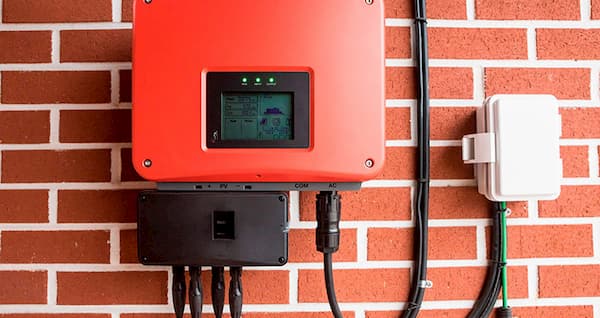Are you looking at a DIY solar panel at home? Then you have come to the right place.
This article exclusively deals with Do It Yourself and more particularly how to build solar panels at home.
Due to high costs in sustainable technology, there is an increasing demand over the DIY approach. The speciality of this movement is that you can build solar panels for yourself at an affordable cost using recycled materials.
That means you can make your own electricity at home.
If you want to purchase a retail wind turbine, then it would cost you thousands of dollars. No doubt, wind power is an investment that will accompany you into the long-term.
But that doesn’t mean that you should spend thousands of dollars on retail solar and wind power turbines.
Contents
Can I Make My Own Solar Panels at Home?
The speciality of DIY solar panels is that you can build solar panels at less than $200 and make electricity at home. The Backyard Revolution is a top-class resource that helps you to create renewable energy under a budget of $200.
It provides you with informative diagrams that detail these construction methods as well as images that depict how the turbine functions overall.
The DIY green energy project is the most popular resource that clearly shows how to build a solar panel at home. Make the use of DIY solar panels in a cheap and affordable manner.
Of course, there are many variations on how to build a solar panel at home.
Some methods require more upfront work, but they can save you money. Others may require a little more money to build, but they can save you a lot of time in the construction process.
Definitely, one should make a proper effort to keep a balance of things and decide how to get the best DIY solar panels cheaply.
How To Select Solar Cells For Making Solar Panel at Home?
Finding and choosing cells for solar panels is the most critical part of making DIY solar panels. This article helps you to prepare and connect solar cells so as to make cheap solar panels at home.
Each type of solar cell has its own individual characteristics. Don’t mix cell types in a single panel – each panel should consist of only one type of cell.
Getting to know your cells can save you a lot of money and aggravation in the long run.
Basic Inquiry
Different suppliers may offer the same solar cells but at very different prices. It pays to look around for the best price. That being said, the quality of the cells and good customer service can be more valuable than low price alone.
Suppliers have different price breakpoints and you should inquire about these. For instance, a solar cell will be reduced in price at a certain quantity.
Even if the quantity is more than you need, the price break may be big enough that you would spend less money and get more cells.
Solar cells are fragile and it is important to know about replacement policy and procedure if your cells arrive broken from shipping.
Some carriers only insure up to a certain amount, so if your purchase exceeds that amount, get extra coverage for replacement – it’s worth a few extra dollars.
Do not buy cells from anyone if shipping is not insured, or they will not provide replacements for solar cells broken in shipping when the cells are not being sold as broken cells.
Close Observation
Choose and inspect your cells carefully. As noted previously, solar cells are available in a variety of types and sizes. The prices vary, depending on the supplier and the output of the cell.
When you purchase your cells, you should also ask for dead or broken cells.
These are good to use to practice soldering and to get a feel for handling the cells. However, do not use any cells that seem a bit substandard for your panel.
Cells that have hairline cracks may appear to be functioning well when you test them initially, but when the panel is exposed to the weather there will be contraction and expansion that can break such cells.
If this happens after you have your panel built and sealed, the solar panel will not work. The entire panel would have to be taken apart to replace the bad cell.
So, avoid this problem by carefully inspecting all the cells you are going to use before you solder them together for a panel, and stabilize any cracks in the cells if you are going to use cells with cracks.
When working with Photovoltaic (PV) cells, remember to be gentle with them. They are brittle and crack very, very easily. In particular, when soldering, there is a tendency to apply too much pressure by leaning on them.
Also, solar cells are heat sensitive, so it’s important to get a feel for how to solder the connectors to them without damaging the cells with too much heat.
Solar Panels at Home Using Crystalline Solar Cells
If you have considered all the scientific discoveries that had happened over the last century, then you would surely appreciate the translation of solar energy to electrical energy through photovoltaic cells.
To be frank, it is the most realistic and electrifying breakthrough in the tapping of solar energy.
There are two types of crystalline solar cells: polycrystalline and monocrystalline.
Crystalline solar cells are produced mainly by the Siemens process, the Czochralskie process, and ribbon process.
Siemens Process
In the Siemens process, trichlorosilane, or silane is fed along with hydrogen into a chamber in which slender rods of electronic-grade silicon is heated to over 1000°C.
This process produces a polycrystalline ingot.
Czochralskie Process
In the Czochralskie process, silicon chunks are heated to over 1000°C thereby seed crystal melts out when rotated. The silicon solidifies and forms a single crystal growth.
This produces a monocrystalline ingot.
Ribbon Process
Another method is the ribbon forming process in which strings are pulled through a container of molten silicon. The molten silicon solidifies between the strings and forms a continuous ribbon.
In each process, after the crystal is formed, it must be cut into wafers. Thus, it is made to cut as per the size and then polished enough to make PN junction.
Then, the front electrodes and back contacts are applied. Finally, an anti-reflective coating is applied.
Polycrystalline and monocrystalline solar cells are used for building solar panels because they are easy to work with, are most readily available in the secondary market, and provide a good power output that is cost-effective.
By reading the above info, don’t be of the impression that building solar panels is a technical issue. Isn’t it easy to make a DIY solar panel at home?
Visit Backyard Revolution and know how to build solar panels for yourself. Make DIY solar panels and cut your electricity bills by as much as 70%.
Now It’s Your Turn
Now I’d like to hear from you:
I hope you enjoyed this guide on solar panel at home.
Which technique from today’s post are you going to use to select solar cells?
Are you going to use crystalline solar cells?
Either way, let me know by leaving a comment below right now.



